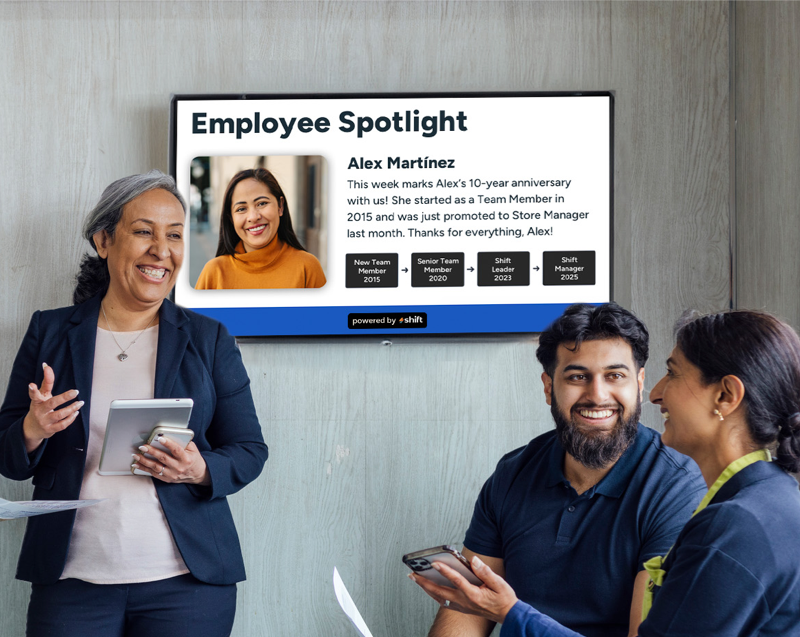By Theresa Bontempo
No matter what type of restaurant you’re running, if you don’t have engaged employees who want to do their best work, you can end up with a lackluster experience for patrons and high turnover of staff. Both of these outcomes are less than ideal for restaurant owners and managers. So what kinds of solutions can you implement that will boost engagement and staff morale? Since only around 34% of U.S. employees report feeling engaged at work, it seems there’s a lot that business owners can do to improve this. Restaurants specifically can see amazing results when they choose to invest more in employee engagement, including a reduction in turnover and an increase in revenue.
If you’re looking for examples of employee engagement for restaurants that you can start including in your workplace, you’ve come to the right place because we’ll be discussing:
- Why restaurant employee engagement is so important
- Examples of employee engagement for restaurants that you can implement right now
- The digital signage for employee communications you need
Why improving employee engagement in restaurants is essential
The benefits of engaged employees can make a big difference on your bottom line

Savvy restaurant managers know that engaged employees are less likely to leave, come to each shift with a great attitude, and want to see the restaurant succeed. Image courtesy of Square.
All the members of your restaurant’s team are important, and in order to run smoothly, everyone needs to be aware of exactly what’s expected of them. Unfortunately this often isn’t the case in all kinds of restaurants, from fast-food to upscale establishments. What’s missing? It’s employees feeling engaged with their jobs and acting as brand ambassadors for your restaurant. Not feeling supported or feeling like they’re not doing meaningful work is a recipe for burnout and turnover, which are two consequences of a lackluster employee engagement strategy.
When businesses make the investment in the wellbeing of their employees, it serves both the restaurant and staff better, and leads to substantial benefits. Some of the top benefits of choosing to create an employee engagement plan include:
- Reduced turnover. One of the biggest issues faced by restaurants is the extremely high turnover rate, which in 2023 reached 73.9%. That is a large number of employees that are entering and exiting your restaurant, requiring hours of training and resulting in lost productivity as new employees become acclimated to their work environment. Instead of a revolving employee door, when you invest in employee engagement you can instead hold onto employees because they feel more loyal and engaged with the restaurant’s brand. Boosting engagement reduces the likelihood of employee turnover, which means staff isn’t constantly changing and in need of training, improving productivity and revenue.
- Increased revenue. This brings us to the second benefit of an employee engagement strategy, that the restaurant will see an increase in revenue when it can retain skilled employees who feel engaged daily. Keeping employees who have been properly trained and have experience is the goal of all restaurants, because these employees know how to handle a variety of situations, and know what is expected of them. Engaged employees are more committed to the restaurant’s brand, and feel confident upselling as well.
- Positive work culture. Lots of restaurants suffer from a toxic work environment that often doesn’t leave room for positivity or open encouragement and recognition from management. Employee engagement strategies can help shift this kind of work culture into something much more positive, where staff don’t dread coming on their shift for the day. No one wants to work for management that doesn’t support or recognize their hard work, and where there are no rewards for going above and beyond what’s expected. A positive work environment can be created when management and employees have open lines of communication, ensuring that the needs of staff are heard.
- Higher productivity. Engaged employees are more likely to be productive while on their shift. Because they feel like their hard work is recognized, they will often have no problem ensuring they complete their duties to the best of their abilities—and help out other employees along the way. Restaurants have a fast-paced work environment, which means productivity and accuracy need to be at a high level. Employees who are satisfied with their jobs show up to do what is expected of them.
- Satisfied customers. Your restaurant won’t get very far if you don’t keep customers coming back for more. And in order to have a pleasant dining experience, employees need to be on top of their game. Satisfied, experienced, and loyal employees can offer diners the best kind of experience. They are also the type of workers who can resolve issues satisfactorily for customers should they arise, ensuring that even if there are challenges, they can successfully be overcome.
Looking to boost your employee engagement? Look no further than a digital signage strategy. Shift can give your company the digital signage solutions you’re looking for. Our employee engagement platform delivers effective communication to your workers through digital screens. Your customized content can use real-time data and metrics to increase productivity, reduce employee turnover, and maximize your profit. Upgrade from the corkboard to a digital solution and you’ll be on your way to happier, more engaged employees.
7 examples of employee engagement for restaurants to enact ASAP
Try these employee engagement strategies for your restaurant staff and see how their engagement improves!

Restaurant employee engagement strategies help you train and keep skilled workers for the long run. Image courtesy of Kezner Consulting.
Restaurants want to attract and retain the best workers out there, but this is often easier said than done. Having a clear engagement game plan is one of the best ways to ensure the workers you retain are not only great at their jobs, but they feel satisfied and supported by management. If you’re wondering where to start when it comes to engagement, we have 7 examples you can start implementing today and see results in no time.
1. Recognize employee accomplishments
One of the most beneficial ways that restaurant management can engage employees is by calling out when they have gone above and beyond their duties to help out another employee, or when they’ve done an exceptional job. A lot of restaurant employees feel like their management doesn’t recognize a good job by either calling it out in a meeting, or doing so in a one on one. Recognizing what they’re doing well, and saying so, can go a long way towards employee satisfaction and engagement.
There’s an easy way to do this so that it doesn’t overwhelm already busy managers, but employees still get the recognition that they deserve. Using digital signage for employee communications is one of the most effective ways to showcase an employee in real time. Whether it’s meeting a sales goal, highlighting a safety issue that was resolved, or recognizing how productive they were, this is an excellent way for restaurant managers to boost engagement.
Pro tip: Consider having a rewards program for staff members in addition to getting recognized for doing a great job. Small incentives like gift cards can go a long way.
2. Have effective training/onboarding programs
A lot of restaurants struggle with retaining employees because they do not feel like they were effectively trained. This can lead to issues and challenges that could have been prevented or addressed in an effective training program. Pairing up less experienced employees with a mentor who has more experience is a fantastic way to build expertise from the ground up. When staff feel like they have someone they can emulate or ask questions of, they’re more likely to feel confident that they’re doing a good job, which can lead to a decrease in turnover.
3. Call out staff milestones
Just like recognizing restaurant employees for their hard work and dedication is essential for encouraging satisfaction, so is calling out milestones. Digital signage for employee communications like recognizing birthdays and work anniversaries shows staff members that management recognizes the years of dedication they’ve put into the restaurant. It can also show newer employees that workers choose to stay at your restaurant because management makes it a point to support and engage them throughout their time employed there.
4. Transparent communication
Management should not just say they have an open door policy, but actively ensure that they’re using employee engagement software to issue communications in real time. Using digital signage ensures that staff members on any shift will receive up to date information about changes coming up, or tips on how to minimize errors. Employees want to know where to turn to when they have a question, or learn what resources are available to them. When everyone is on the same page, it’s much easier to streamline workflows and promote better coordination between teams.

Providing mentorship or shadowing opportunities for newer staff members ensures they are trained for their tasks in the correct way. Image courtesy of Market Man.
5. Offer growth opportunities
Employees that have clear information about developing additional skills and certifications are much more likely to stay with the restaurant for longer periods of time. A lot of workers may feel like they have to leave (increasing turnover) if there are no clear paths towards higher positions (and salaries) or ways to keep growing professionally. Giving employees the chance to continue developing additional skills like offering workshops or classes will ensure you not only have workers with more expertise, but they’ll be less likely to take those skills elsewhere.
6. Flexibility
In order for employees to feel like their jobs have meaning, you’ll need to make sure management gives them autonomy to complete their duties in the best way they know how. This doesn’t mean staff do whatever they want, but rather they know what is expected of them, and it’s up to them to decide how to implement it. This degree of flexibility shows that management is not interested in micro-managing every detail and task that their position requires.
7. Encourage feedback
Feedback is a part of the open communication factor, ensuring that employees feel like they have an outlet to voice questions, concerns, or suggestions. Management should use this information to make adjustments and determine if something is/is not working the way it was intended. Management can encourage restaurant employee feedback easily by including a QR code on their digital sign that leads to surveys. When employees know that managers are taking their feedback seriously, they feel more supported and loyal.
Which kinds of employee engagement will you implement in your restaurant?
Improving employee engagement in the back of the house in restaurants is an important component of building a positive work culture where employees are more satisfied and happy with their jobs. One of the best ways to do that is with a digital signage strategy that harnesses the power of technology to ensure prompt delivery of internal communications. If you’re ready to make the switch, contact Shift today and see how we can level up your business.
















.jpg)